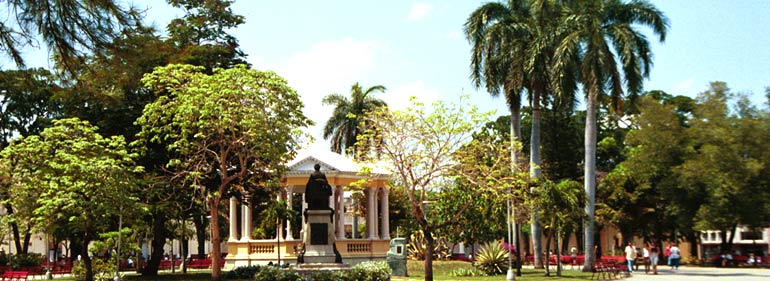Located in the historic centre of the city of Santa Clara, Villa Clara, Cuba. It is a symbol of culture and identity of the villaclareños. On July 15, 1999, in commemoration of the 310th anniversary of the foundation of the city of Santa Clara, it was declared a National Monument.
Its current name is the result of an agreement made by the Santa Clara Town Council on 4th March 1899, at the proposal of one of its councillors, Enrique del Cañal, and in honour of the Cuban patriot, Leoncio Vidal Caro, a native of Ceja de Pablo in Corralillo.
Vidal Caro died in war action on the night of March 23rd, 1896, in the Park called "Plaza de Recreo" until then. This name had been decided by the Town Council in 1871, and the need to provide the area with better conditions was also considered, and it was decided to renovate it, since until then it had been a neglected area, covered with wild plants. Previously, this open space was known by different names, such as: Plaza de Armas, Plaza Mayor and Plaza de la Constitución, the latter name was given to it while the constitutional regime remained in Spain. For this purpose, a pyramid was built in 1820, with the agreement of the neighbours and the authorities of the Cabildo, which was demolished when this regime fell in the metropolis. Nevertheless, the Park has always been an obligatory point of visit and transit not only for its inhabitants but also for those who visited the town.
Nowadays it is a meeting point for the city's bohemian life. In its surrounding streets lie buildings of great architectural value for the community and it is the main stage for book fairs, children's activities, theatrical productions and fashion shows on a daily basis.

